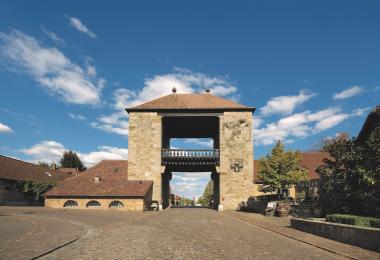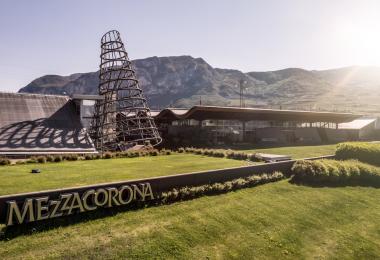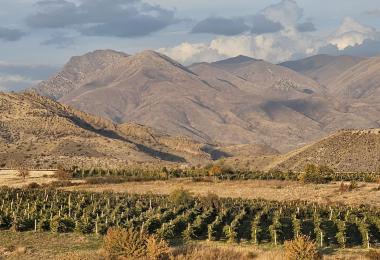The new terroir descriptions, based on international standards, have brought the attention of the international wine press back to Rioja. The 600 or so producers across the entire appellation region can now identify not just the subregion (now: zona before: subzona) and the town or village (municipio) on the label, but also a clearly defined singular vineyard. This latter mention, with its precisely defined geographical limitations, uses the term Viñedo Singular to reflect the diversity of terroir in specific delimitated plots within the 65,000-hectare DOCa on the upper Ebro. It’s important to realise how complex the situation is in an area measuring 120 km from north-west to south-east and 40 km across. The many tributaries of the Ebro with its side valleys provide a wealth of different terroirs. It is also worth noting the difference between genuine new rules and revised guidelines, as some aspects are not entirely new. The Consejo Regulador in Logroño was often accused of not being open to the idea of terroir, or not wanting winemakers to provide further specific information about the location or production region. In fact, wineries or individual winemakers have been able to provide details of their particular zone and municipality since the end of the 1990s. It is only the introduction of the Viñedo Singular, that represents a new mention. The regulations governing the details of the zone and the municipality have been revised and refurbished by according them a higher status on the label. In other words, this information can now appear in much larger lettering than before and can be printed directly below the appellation Rioja Denominación de Origen Calificada.
A mixed response
The description of the zona is growing in popularity – almost 160 wines will indicate their zone of origin this year, while details of the municipality will only be used by around 50 wineries. This may be surprising, as the DOCa is not lacking in notable towns and villages. It does, however, lead to the conclusion that the majority of Bodegas have greater faith in the appeal of their brand name and outstanding value of blended wines than in details of a municipality. One hundred and forty-four towns and villages are listed in the Consejo Regulador’s registry, of which 118 are in the autonomous region of La Rioja, 18 in the Basque province of Álava and 8 in the Comunidad Foral de Navarra, which has registered several thousand of its regional winegrowing areas as DOCa Rioja vineyards for many decades. It will be interesting to see if the information about municipality will appear more frequently in future. The legislators are even allowing producers to use 15% of grapes from neighbouring villages when producing a specific local wine, keeping in mind special property situations.
Huge interest in the ‘Viñedo Singular’
Just a few months after the supplementary regulations were introduced, several dozen winemakers registered an interest in the singular vineyard classifications. The Consejo Regulador began by requesting all producers to register potential singular vineyards associated with specific brand names. By the end of 2018, 44 Bodegas had submitted applications to the ministry. This represents 76 individual vineyards or plots of land and an overall area of around than 140 hectares. It is expected that there will be a rise in these figures this year, although the formalities are complex and involve financial expense, technical effort and special natural conditions for the businesses concerned. The detailed report that accompanies the application itself has to include, for example, information about the age of the vineyard, the exact size and orientation of the land and a historical summary of the quality achieved to date, plus a detailed soil analysis.
The primary goal is that the terroir-oriented descriptions should merely supplement, enhance and further develop the rules that already apply to the DOCa and should by no means be seen as a substitute. The Consejo Regulador continues to stress that the legal guidelines for the recognition of exceptional local wines should be seen as complementary certified information alongside the traditional classification using ageing times, as the change is more about enabling winemakers and wineries to define the origin of their wines
In practice, it would work as follows: if a producer meets the requirements for identifying a wine from a Viñedo Singular, this could be marketed as a generic Rioja with a green label on the back or as a wine with one of the three traditional quality levels: Crianza, Reserva or Gran Reserva. In reality, the majority are sure to be produced as Reservas or the generic basic level
Complex legislation
A Viñedo Singular can correspond to a single vineyard, a single plot of land or several adjoining plots. The vineyard must be at least 35 years old. Naturally it must be harvested by hand and the yield for red wines, for example, is limited to 5,000 kg per ha with a must yield of 65%. In an initial phase there will be no size limitation on the location of the vines although it is obviously envisioned to be a very small area. It would be possible to register an entire holding if the boundaries of the area could be conclusively proven and entered into the land registry
One important point is the indivisibility of a Viñedo Singular; such a plot can only be registered once. In addition, every producer of a future single vineyard wine commits to selling that wine on the market for a minimum of ten years. The producer does not have to own the land but must have a lease spanning at least a decade. In addition, every single vineyard wine must be registered as a brand name. Which producers will choose to become Viñedo Singular pioneers is still not entirely clear. However, Rioja fans have a lot to look forward. There are plenty of candidates, and the many potential top plots include a notable number of those stocked with white grapes. On the official side there are no announcements or estimates of the number of plots that could be considered; however, the sector is talking of at least 250 possible sites
The sector is expecting to see the first wines of the new mention appearing on the market this year. Rioja is currently experiencing a boom in high quality white wines, of which some wines with limited ageing times could be available as early as this autumn. The Spanish trade press is also eager to see whether the selection might include a single vineyard rosé. New wines.
The development of the Viñedo Singular designation will likely lead to a surge of new brand names. Alongside the 44 wineries that have already submitted applications, various producers have since stated their intentions to register. The number of sites registered with the Consejo Regulador for possible future single vineyards shows scope for numerous new labels
Once they have satiesfied the legal requirements, a number of producers could make use of the new mention for brand names – some vines that have never been in the limelight due to their relative scarcity are sure to attract more attention as a result of this new status
Additional appeal
The result is sure to raise the profile of Rioja as a growing area. Very few other regions can offer such an extraordinary contrast between the ultra-traditional and ultra-modern cellar architecture as Rioja, which also boasts many historic buildings and pretty wine villages. Now, many hidden vineyards will also become focal points and Rioja will also benefit from additional investment. All of this adds up to a further increase in wine tourism. After all, nothing is more enticing than the chance to see and taste distinctive and unique wines. And this is exactly what the Viñedos Singulares and their wines will offer.








